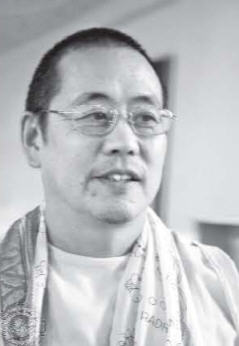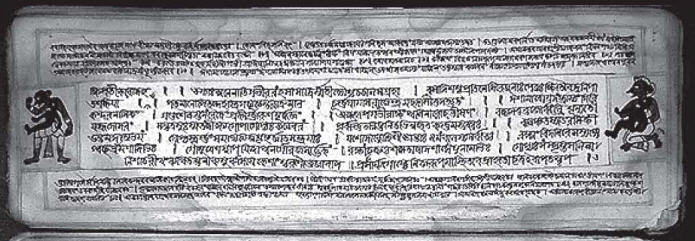A senior ISKCON leader dedicates his life to translate the
profound scriptural commentaries of previous spiritual masters.

Srila Prabhupada wrote extensive commentaries on many Vedic classics like the Bhagavad-gita and the Srimad-Bhagavatam. And he emphasized that his primary qualification in writing these commentaries was that he was repeating the message of the previous acaryas who in turn had received revelations into the heart of Krishna. Srila Prabhupada desired that the commentaries of the previous acaryas on the Vedic scriptures be translated into English. In the Introduction to Srimad-Bhagavatam, he wrote:
“Many devotees of Lord Caitanya like Srila Vrndavana dasa Thakura, Sri Locana dasa Thakura, Srila Krishnadasa Kaviraja Gosvami, Sri Kavikarnapura, Sri Prabhodananda Sarasvati, Sri Rupa Gosvami, Sri Sanatana Gosvami, Sri Raghunatha Bhatta Gosvami, Sri Jiva Gosvami, Sri Gopala Bhatta Gosvami, Sri Raghunatha dasa Gosvami and in this latter age within two hundred years, Sri Visvanatha Cakravarti, Sri Baladeva Vidyabhusana, Sri Syamananda Gosvami, Sri Narottama dasa Thakura, Sri Bhaktivinoda Thakura and at last Sri Bhaktisiddhanta Sarasvati Thakura (our spiritual master) and many other great and renowned scholars and devotees of the Lord have prepared voluminous books and literatures on the life and precepts of the Lord.
Such literatures are all based on the sastras like the Vedas, Puranas, Upanisads, Ramayana, Mahabharata and other histories and authentic literatures approved by the recognized acaryas. They are unique in composition and unrivaled in presentation, and they are full of transcendental knowledge. Unfortunately the people of the world are still ignorant of them, but when these literatures, which are mostly in Sanskrit and Bengali, come to light the world and when they are presented before thinking people, then India’s glory and the message of love will overflood this morbid world, which is vainly searching after peace and prosperity by various illusory methods not approved by the acaryas in the chain of disciplic succession.”
To fulfill this desire of Srila Prabhupada, one of his senior and scholarly disciples, His Holiness Bhanu Swami Maharaja, has been translating for nearly three decades many of the important works of the previous acaryas. He has just completed the translation of the full commentary on the Srimad-Bhagavatam of Srila Visvanatha Cakravarti Thakura, who is well known and much loved for his devotional insights into the scriptures. On this landmark occasion we present an interview with Bhanu Swami Maharaja (BM).
BTG: Can you please tell us how you were introduced to Krishna consciousness?
BM: I met devotees in Japan in 1971 and then met Srila Prabhupada there and went to India with him.
BTG: Were you attracted to learning Sanskrit from the beginning of your Krishna consciousness? How did you gain sufficient mastery over Sanskrit to be able to translate Sanskrit works? How long did it take to gain sufficient competence in Sanskrit?
BM: I learned the Bengali script to get the exact letters of the songs. Some years later I learned the grammar. Then I learned Sanskrit on my own in my spare time from various books. I started translating Bengali Navadvipa-dhama-mahatmya around 1982. I kept to Bengali works or Sanskrit works with Bengali translations till around 2000 when I translated Visvanatha’s commentary on Gita.
BTG: What inspired you to take up this service of translating the works of the previous acaryas?
BM: There was a lack of accurate translations of Gaudiya commentaries.
BTG: Which are the books that you have translated till now?
BM: Caitanya-siksamrita (Bengali)
Ananda-vrndavana-campu of Kavikarnapura
Sri Madhava-mahotsava of Jiva Gosvami
Bhavartha-saìgraha
Krishna-ahnika-kaumudi (Kavikarnapura)
Commentary of Baladeva Vidyabhusana and Visvanatha Cakravarti Thakura on Gita.
Laghu-bhagavatamrta with Baladeva Vidyabhusana’s commentary
Brahma-samhita commentary of Jiva Gosvami
Isopanisad commentary of Baladeva Vidyabhusana
Bhakti-rasamrta-sindhu with commentaries of Jiva Gosvami and Visvanatha Cakravarti Thakura.
Ujjvala-nilamani with commentaries of Jiva Gosvami and Visvanahta Cakravarti Thakura.
Vaisnava-tosani of Jiva Gosvami
Krishna-karnamrta commentary of Krishnadasa Kaviraja Gosvami
Commentary of Visvanatha on the Tenth Canto of Srimad-Bhagavatam
Gita-govinda commentary of Prabhodananda Sarasvati
Vidagdha-madhava commentary of Visvanatha Cakravarti Thakura
Gopala-campu by Jiva Gosvami

BTG: Can you please tell us something about the importance of Srila Visvanatha Cakravarti Thakura in our Gaudiya-Vaisnava-sampradaya? Why is he known as the rasika-acarya?
BM: His interpretations give insight into relationships of Radha and Krishna. He harmonizes the text with the Gaudiya siddhanta.
BTG: How long did it take for you to translate the full commentary of Cakravarti-pada? Which section was the most challenging? Which section did you personally relish the most?
BM: The Tentù Canto commentary of Visvanatha took about a year. Same with Jiva’s commentary. The most difficult part is prayers by the personified Vedas.
BTG: As many devotees find it a challenge to complete Srila Prabhupada’s voluminous Bhagavatam purports, can you please explain how they can practically integrate the study of Cakravarti-pada’s commentaries into their svadhyaya so as to increase their taste for the Bhagavatam?
BM: Generally Visvanatha only comments to clarify meaning and grammar, and to resolve any contradictions to our siddhanta. He does not say more than necessary in most cases. This gives us a clear, concise method of obtaining the essential meaning.
The interview was conducted by Caitanya Carana Dasa on behalf of BTG.
